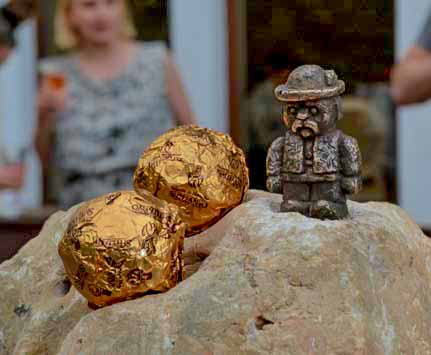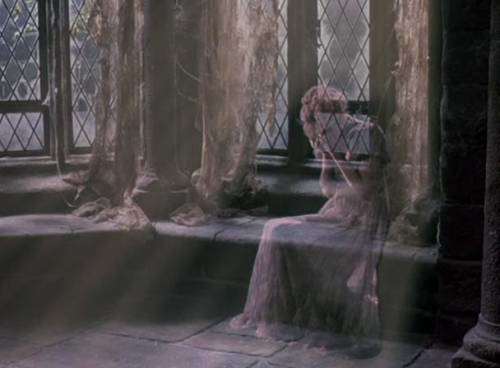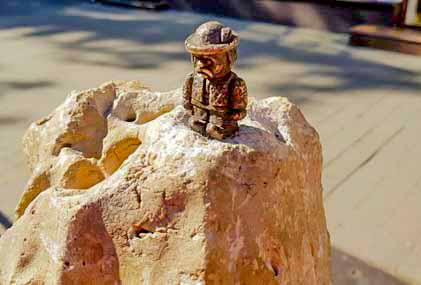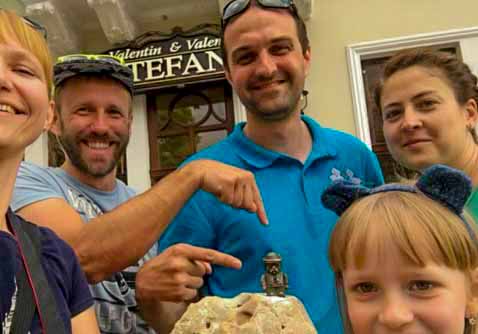
This mini-sculpture by Mikhail Kolodko became the 33rd in the city Uzhgorod. Install it May 5, 2018 on the squareSandora Petefi in Uzhgorod near the confectionery “Fekete sas”, which belongs to Valentina Stefano.
The original sculpture is made in the form of a meteorite fragment, on which there is a bronze figure of a Transcarpathian peasant Vasily Kriv’yanik, who found the largest piece of the legendary meteorite near the village Princess. The newly installed mini-sculpture immediately had a bus stop sign “Meteor Princess”. In addition, a new candy “Meteor”was created in the nearby pastry shop of Stefano on the occasion of the installation of a mini-sculpture.
According to the legend the story «Castle in Carpathian» world famous French science fiction writer Jules Verne created after a trip to Transcarpathia in 1892. The author described the mysterious events that took place in the Transcarpathian outskirts of Zalesye, told about the “spirits” who settled in the desolate medieval castle, about the tragic love story of Prince Rudolf Gorz and the Italian singer Stilli. The writer was inspired to create this work by a visit to Uzhgorod castle.
In Transcarpathia, Jules Verne came in search of fragments of the largest meteorite in Europe, which exploded in 1866 at an altitude of 40 kilometers above the village of Knyazhina In the district of Veliky Novgorod. A meteor shower of more than 1200 pieces covered an area within a radius of up to 5 kilometers. The main mass of the meteorite body, namely its core, was found on the slope of the Stenka mountain in the Black Mlaki tract eight kilometers from the village of Knyagin, after which the famous meteorite was named by the same name.
Immediately after the fall of the meteorite, the inhabitants of the region Were panic-stricken. They took this event as a bad omen. “God was beaten with stones,” they said. Only the priests managed to calm people down, who explained to people that this is a good sign, because this is how the Almighty indicated that the Transcarpathian land is blessed. After that, the peasants began actively collecting and embedding “hundreds of stones” in their own huts.

Mini-sculpture Meterit Princess Bus stop Meteor Princess Opening of the mini-sculpture Meteorite Princess










